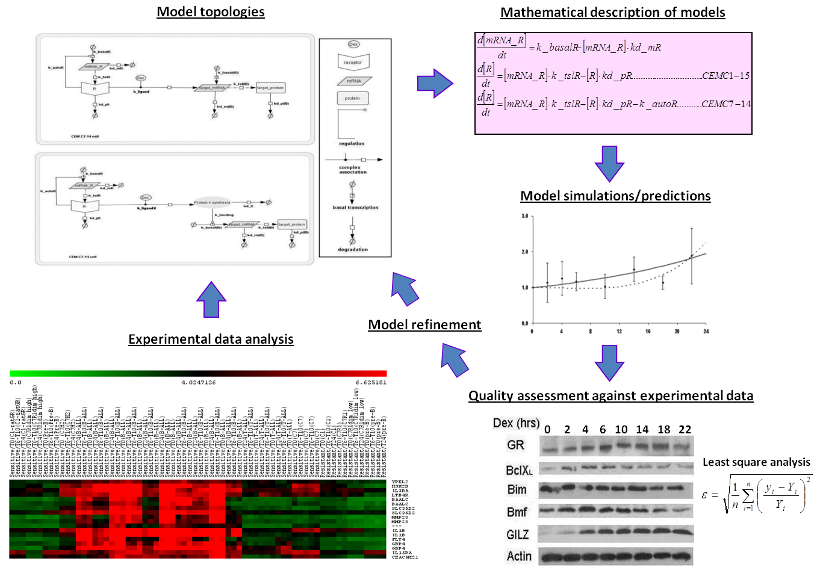Modelling of glucocorticoid-induced gene regulation and apoptosis
Glucocorticoids (GC) play an important role in anti-inflammation, apoptosis and immunomodulatory activity. They are commonly used as part of the chemotherapeutic protocols for lymphoid malignancies and have been successfully applied in the treatment of childhood acute lymphoblastic leukaemia (ALL). Nevertheless, resistance and side effects such as muscle atrophy and osteoporosis still occur frequently.
We have adopted a systems biology approach to better understand glucocorticoid induced gene regulation and apoptosis in acute lymphoblastic leukaemia. By adopting ordinary differential equation modelling, we were able to investigate detailed mechanisms of regulation of GC target genes such as Bim, a key determinant of GC induced apoptosis. Further to this, we carried out an integrated microarray analysis in various ALL samples to study GC resistance and identified the crucial candidate genes c-Jun as a regulator of Bim, as well as Erg as a determinant for GC resistance.

References
Chen DWC, Saha V, Liu JZ, Schwartz JM, Krstic-Demonacos M (2013). Erg and AP-1 as determinants of glucocorticoid response in acute lymphoblastic leukemia. Oncogene 32: 3039-48.
PubMed | Full text
Chen DWC, Krstic-Demonacos M, Schwartz JM (2012). Modeling the mechanism of GR/c-Jun/Erg crosstalk in apoptosis of acute lymphoblastic leukemia. Frontiers in Physiology 3: 410.
PubMed | Full text
Chen DWC, Lynch JT, Demonacos C, Krstic-Demonacos M, Schwartz JM (2010). Quantitative analysis and modeling of glucocorticoid-controlled gene expression. Pharmacogenomics 11: 1545-60.
PubMed | Full text